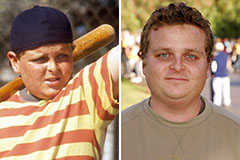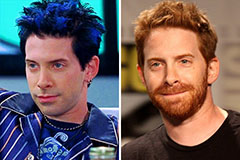Discover the Certain Plants That Are Detrimentally Impacted by Epsom Salt Application
Epsom salt, a popular household solution for various horticulture distress, is often praised for its beneficial results on plant development. Understanding the particular plants that can be negatively influenced by Epsom salt is crucial for any kind of gardener looking to enhance their plant treatment regimen.
Roses

Roses, particularly conscious adjustments in their environment, can be negatively influenced by the application of Epsom salt. While Epsom salt is commonly utilized as a plant food to promote plant growth and boost blooming, roses are just one of the plants that do not respond well to its application. The high magnesium content in Epsom salt can conflict with the uptake of other vital nutrients by the rose plants, causing deficiencies that show up as yellowing leaves or stunted development.

Tomatoes
While Epsom salt is frequently proclaimed as a remedy for numerous plant concerns, consisting of blossom end rot in tomatoes, its application can lead to damaging outcomes if not used judiciously. Excessive Epsom salt, which is magnesium sulfate, can interrupt the delicate nutrient balance needed by tomatoes, potentially leading to shortages in various other important nutrients like calcium. When thinking about the usage of Epsom salt on tomatoes, it is critical to adhere to suggested application prices and soil testing to avoid unintentional consequences on the general health and efficiency of these cherished yard plants.
Peppers
Peppers, admired for their different shades and levels of spiciness, can demonstrate susceptibility to adverse influences from Epsom salt when not used with treatment and factor to consider for their details dietary requirements. what plants don't like epsom salt. Peppers, belonging to the Solanaceae family, need a fragile equilibrium of nutrients to prosper. While Epsom salt is understood to boost magnesium degrees in plants, excessive application can interrupt this equilibrium, resulting in adverse effects on pepper plants
When peppers are revealed to high degrees of magnesium from Epsom salt, it can hinder the plant's capability to soak up other necessary nutrients like calcium and potassium. This discrepancy may materialize in symptoms such as leaf staining, stunted growth, and minimized fruit production. In addition, the excessive magnesium can alter the dirt pH, additional intensifying nutrient uptake problems for peppers.

Rhododendrons
Provided the sensitivity of particular plant species to imbalances brought on by Epsom salt, it is necessary to consider the influence on Rhododendrons, which additionally require certain nutrient levels to flourish. Rhododendrons are acid-loving plants that prefer acidic check out here soil problems with a pH array between 4.5 and 6.0. Epsom salt, chemically recognized as magnesium sulfate, can change the soil pH and disrupt the delicate balance of nutrients vital for Rhododendron health.

To preserve the optimum growth and wellness of Rhododendrons, it is critical to stay clear of the indiscriminate use Epsom salt and instead concentrate on supplying the certain acidic soil conditions and nutrients that these plants need for thriving.
Azaleas
Azaleas, recognized for their dynamic blossoms and wide variety of colors, are decorative shrubs that belong to the Rhododendron genus. These popular flowering plants are typically discovered in landscapes, parks, and gardens as a result of their beauty and flexibility. Azaleas are delicate to changes in dirt pH levels, which can significantly affect their development and overall health. While Epsom salt is typically used as a remedy for magnesium shortage in plants, its application to azaleas can have unfavorable impacts.
When Epsom salt is put on azaleas, it can change the soil pH, making it more acidic. Azaleas prefer somewhat acidic soil problems, and an extra of magnesium from Epsom salt can interrupt this equilibrium, resulting in nutrient imbalances and potential poisoning problems. The wrong application of Epsom salt can lead to stunted development, yellowing of fallen leaves, and general decline in the wellness of azaleas. For that reason, it is important to be mindful when thinking about the use of Epsom salt on azaleas to avoid any type of unfavorable consequences Discover More on these delicate ornamental bushes.
Final Thought
Finally, it is very important to be mindful of the certain plants that can be negatively influenced by the application of Epsom salt. Roses, tomatoes, rhododendrons, peppers, and azaleas are some examples of plants that might not take advantage of Epsom salt and might also experience injury. It is essential to study and comprehend the requirements of each plant species before utilizing Epsom salt as a plant food to ensure their wellness and health.
Comprehending the certain plants that can be negatively influenced by Epsom salt is crucial for any garden enthusiast looking to optimize their plant care routine. While Epsom salt is typically made use of as a fertilizer to promote plant growth and boost flowering, roses are one of the plants that do not react well to its application.Excessive use of Epsom salt can also result in a build-up of salts in the dirt, leading to root damages and dehydration of the rose plants. While Epsom salt is known to boost magnesium levels see this page in plants, too much application can disrupt this stability, leading to adverse results on pepper plants.
The high salt web content in Epsom salt can also dry out Rhododendron origins, causing further stress and damages to the plant. (what plants don't like epsom salt)
 Patrick Renna Then & Now!
Patrick Renna Then & Now! Seth Green Then & Now!
Seth Green Then & Now! James Van Der Beek Then & Now!
James Van Der Beek Then & Now! Tina Majorino Then & Now!
Tina Majorino Then & Now! The Olsen Twins Then & Now!
The Olsen Twins Then & Now!